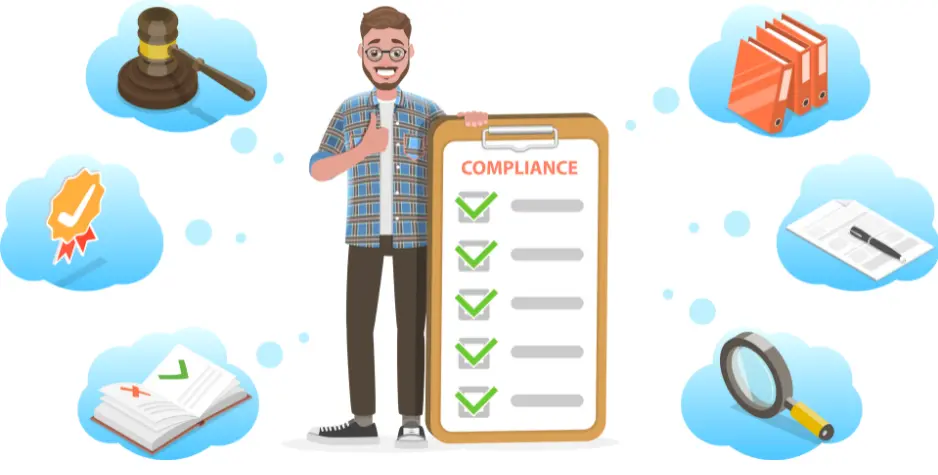Understanding ADA Compliance

The Americans with Disabilities Act (ADA): Enacted in 1990, the ADA is a critical civil rights law in the United States designed to protect individuals with disabilities from discrimination in various sectors, including employment and public accommodations. With the growing importance of the internet, ADA compliance has been increasingly applied to web accessibility.
ADA’s Expansion to Online Spaces: Since 2018, there’s been a consensus that ADA compliance extends to the digital realm, including websites, online portals, and e-commerce stores. In 2022, the Department of Justice reaffirmed that websites are places of public accommodation, thus subject to ADA requirements.
Web Content Accessibility Guidelines (WCAG)
Web Content Accessibility Guidelines (WCAG): This is a comprehensive guide detailing how to make web content accessible to people with disabilities. While not explicitly stated in the ADA, adherence to WCAG is widely regarded as meeting ADA compliance.
Accessibility Outside of the U.S.
In addition to the ADA, there are various other international and regional laws relevant to web accessibility. These laws differ based on your location and business operations. It’s essential to be aware of these regulations as they guide how you should make your website accessible to individuals with disabilities. Understanding and complying with these laws not only ensures legal adherence but also enhances the inclusivity of your digital presence.
- Section 508: Part of the Rehabilitation Act of 1973, this U.S. federal law requires that all information and communication technology (ICT) of federal agencies or organizations receiving federal funding be accessible to people with disabilities.
- The Accessibility for Ontarians with Disabilities Act (AODA) mandates accessibility standards for organizations in Ontario, Canada.
- UNRUH Act: This California law prohibits discrimination by businesses based on disability and other characteristics.
- NYHRA: Similar to the ADA, the New York City Human Rights Law protects against discrimination in various settings, including digital spaces.
ADA-Related Lawsuits
Recently, there has been a notable increase in legal actions related to web accessibility. In 2022, the number of ADA web accessibility lawsuits peaked at 3,250. However, these lawsuits represent a small fraction of the total number of demand letters issued, indicating a broader concern about ADA compliance among businesses.
The potential fines for non-compliance can be substantial, with maximum penalties reaching $150,000. Average settlement costs in these cases typically range between $20,000 and $50,000.
This trend underscores the importance of ensuring websites meet ADA standards to avoid legal repercussions.
How to Make Your Website Accessible
At its core, the Web Content Accessibility Guidelines (WCAG) emphasize four fundamental principles for your website:
- It should be perceptible to all users, including those with sensory disabilities
- Operable by everyone, regardless of physical abilities
- Understandable in a way that makes navigation and comprehension straightforward
- Robust enough to support various assistive technologies and evolving user needs
These principles guide the development of a universally accessible web experience.
Benefits of an Accessible Website
Making your website accessible is more than just complying with legal standards; it’s a commitment to inclusivity, ensuring all users, regardless of their abilities, can engage with your content. This approach not only fulfills a moral duty but also brings tangible benefits. Accessible websites typically see higher traffic due to their broader appeal. Improved accessibility can positively impact search engine optimization (SEO), as search engines favor sites that are user-friendly to a diverse audience. Additionally, businesses may qualify for tax credits when they invest in making their sites ADA-compliant. Beyond these advantages, adhering to ADA standards significantly reduces the risk of legal actions and the associated financial penalties, safeguarding your business against potential lawsuits.
WT Digital Agency’s Role
WT Digital Agency specializes in providing ADA compliance audits and web accessibility solutions. They ensure that clients’ websites are not only legally compliant but also accessible to a diverse range of users. Their services are designed to align with the standards set by the WCAG and the ADA, offering a comprehensive approach to web accessibility. This includes evaluating and enhancing websites to meet the necessary criteria, ensuring inclusivity for users with disabilities, and protecting businesses from potential legal issues related to accessibility.
Conclusion
ADA compliance is vital across various sectors, including engineering, healthcare, and manufacturing, due to the diverse needs of their audience. Recognizing this, WT Digital Agency offers a complimentary audit to evaluate website accessibility. This audit helps identify areas where a website may not meet ADA standards. Following the assessment, WT Digital Agency provides tailored recommendations to enhance web accessibility, ensuring that these industries can serve a wider, more inclusive audience while adhering to legal requirements.
Are you ready to take the next step and learn more about accessibility? Let’s get to work.
About the Author
Mark Itzkovitz
Owner
Digital marketing agency founder with 18+ years experience. Former IT expert turned marketing strategist for MSPs and IT providers. Combines tech knowledge and marketing skills to deliver lead generation solutions for business owners.
